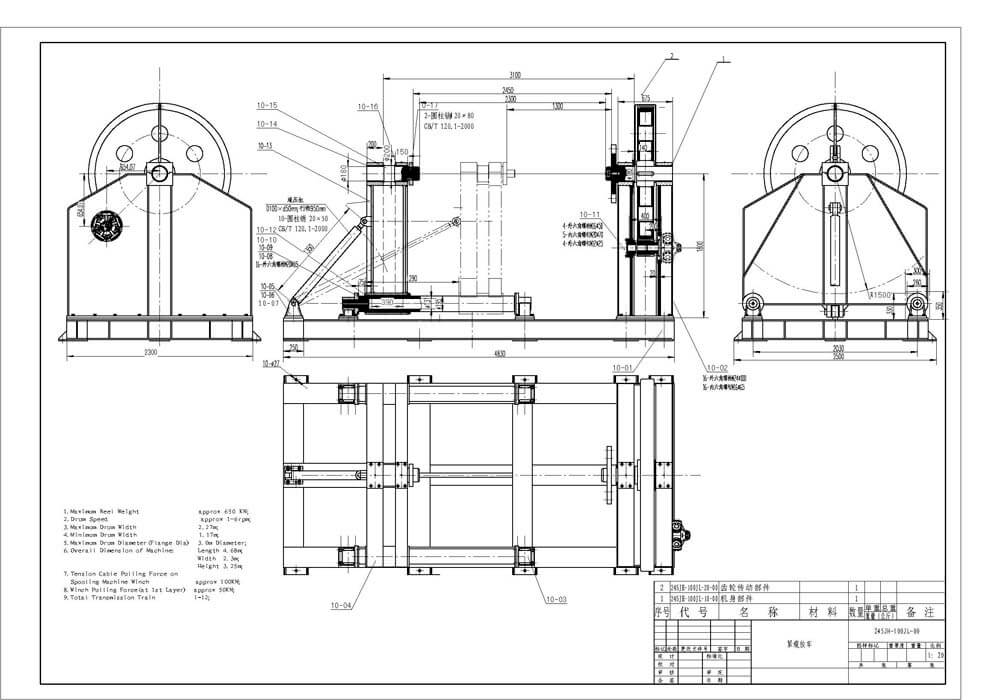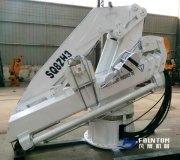Wire rope spooling (reeling) machine -optomized design from Fountom
Fountom is an professional and experienced marine spooling machine designer and supplier. Portability to cater for onshore and offshore winch wire coiling work, the wire rope spooler is a hydraulic-controlled constant back tensioning machine built specially for even coiling/uncoiling of wire rope. It has the following features:
- Total portability. Suitable for on-site and offshore environment.
- Capable of spooling a max.120-ton capacity coil of wire rope.
- Constant controlled back-tension of up to 15 metric tons during pay in and pay out.
- Transportable in 40 ft container, easy freight.
- Lightweight. Total combined weight less than 8Tons.
- Portable, separated diesel powered driven power-pack, rugged and versatile.
- Used for the installation of new and old wire rope into winches or cranes.
- Clamp on “claw” design eliminating commonly used bulky shaft; easy latch on convenience.
Fountom knows how to make an excellent spooling machine for your vessel
Our state of the art spoolers does away with using traditional methods which are out dated. Technology has brought together an improved version to carry out coiling jobs which were once deemed impossible.
Traditional method Fig. A and B are outdated and technically no longer considered efficient methods. As the demand for larger size wire ropes increasingly becoming popular, these methods are fast becoming obsolete.
Fountom’s fleet of spooling machines were specially designed to improve on traditional methods.
Fig. A
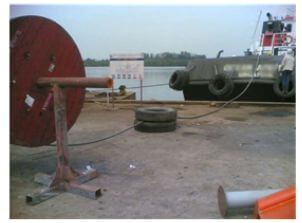
Wire rope coil on a stand where “tension” is created placing the wire rope between two rubber tires and adding a load on it. This method does not create sufficient back tension and should there be a need to pay out during the coiling process would invite trouble.
Fig. B

Wire rope passing through a series of sheaves. These sheaves are tighten by means of bolts. “Tension” is created by working on the principle to increase the difficulty for the wire rope to pass through. The sheave structure is then fastened to a strong point. This method causes force against the strands of the wire rope leading to damages to the wires. Not suitable for non-rotating wire rope.
Back-tension
Back tensioning is very important when installing a wire rope onto a winch where a series of multiple layer of wire rope coiling exists. If insufficient back tensioning is produced, the wire rope on the top layers of the drum will be prone to cutting into the under layers upon load application. This will result in damages to the wire rope.
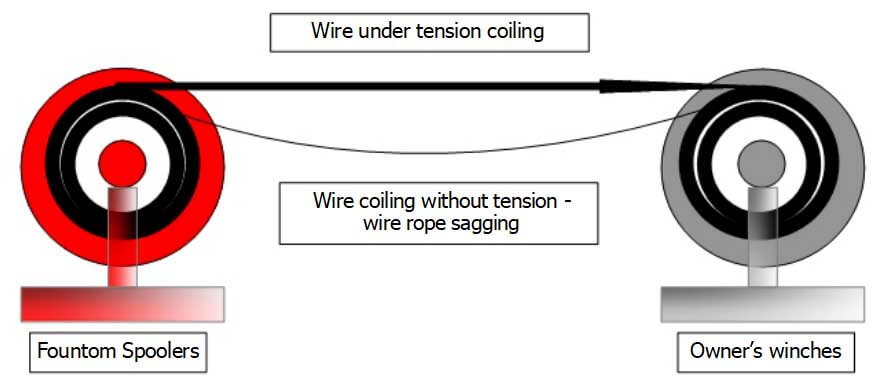
Coiling a wire rope onto the drum or winch with constant back tensioning produces a coil package that is tight and evenly distributed with little tolerance for side movement acting on the underlying, inner layers of the rope coil.
Spooler cross sectional views in performances
Wire rope is coiled onto the winch without sufficient tension. Resulting in loosely packed layers of wire rope and weak under layers. These layers form weak foundation and support allowing top layers to “cut in” when load is applied. Uneven coiling can also be evident here.

Cross sectional sketch showing the negative effect of coiling without tension.
As load is applied to the wire rope (red), it forces downwards and penetrates “cut in” the lower layers. This evidently causes crushing, severe abrasion and mechanical damage. Severe conditions will render the winch incapacitated and wire rope need to be professionally removed or cut free.

Wire rope lodged in when load applied. This would be a disaster when working in the fields.
Benefits of Fountom spoolers -tensioned coiling
Coiling a wire rope onto a winch with constant back tensioning produces a coil that is evenly coiled and tightly packed. As there is a significant reduction in gaps, a strong under layer acting as a solid foundation is evident. This would significantly reduce the “cut in” when load applied. As the wire rope was spooled in under constant back tension, the winch is ready for use and the need for pre-tension in the fields are done away with saving time and man hours.
As a front-end tension is applied, the coiled wire rope will retain its position on the drum allowing for even, damage-free removal of the wire rope.
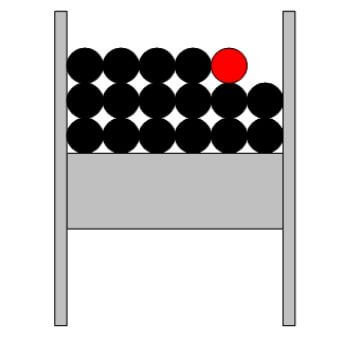
Cross sectional sketch showing the positive effect of tensioned coiling
On site images of perfectly coiled wire rope with constant back tensioning….
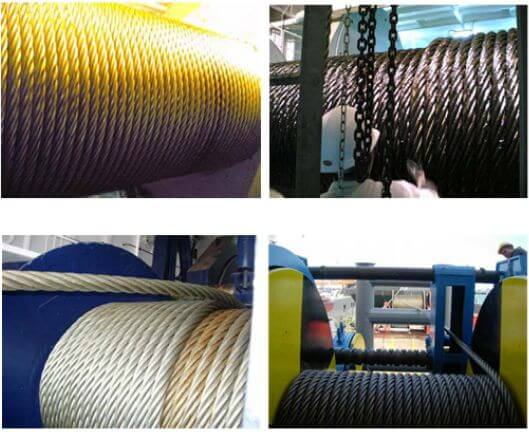
Fountom’s fleet of spooling machines are designed to produce up to 15-tons (machine dependant) of constant back-tensioning during the spooling operations. This back-tensioning is hydraulically controlled and can be consistently maintained throughout the spooling/coiling job.






